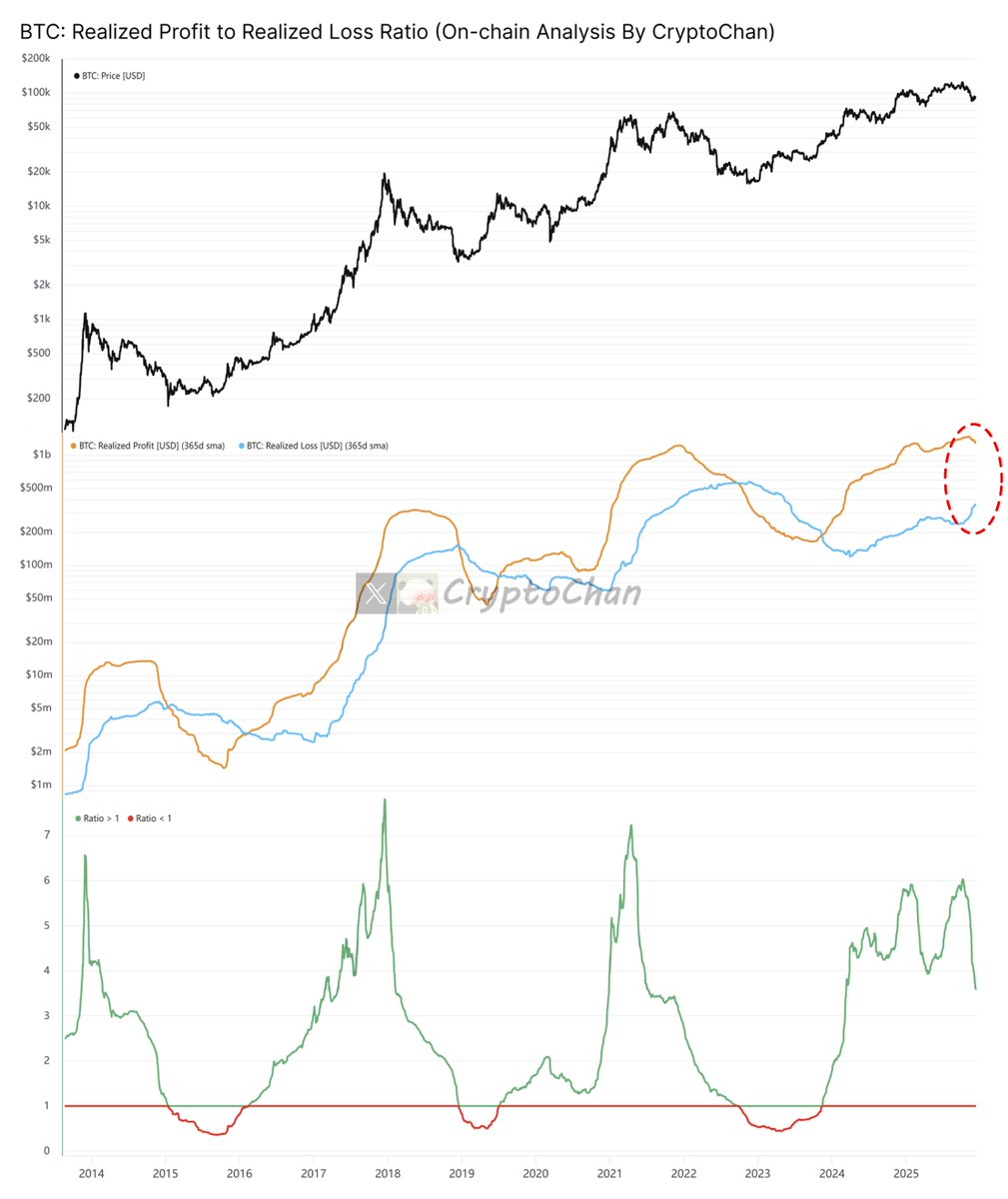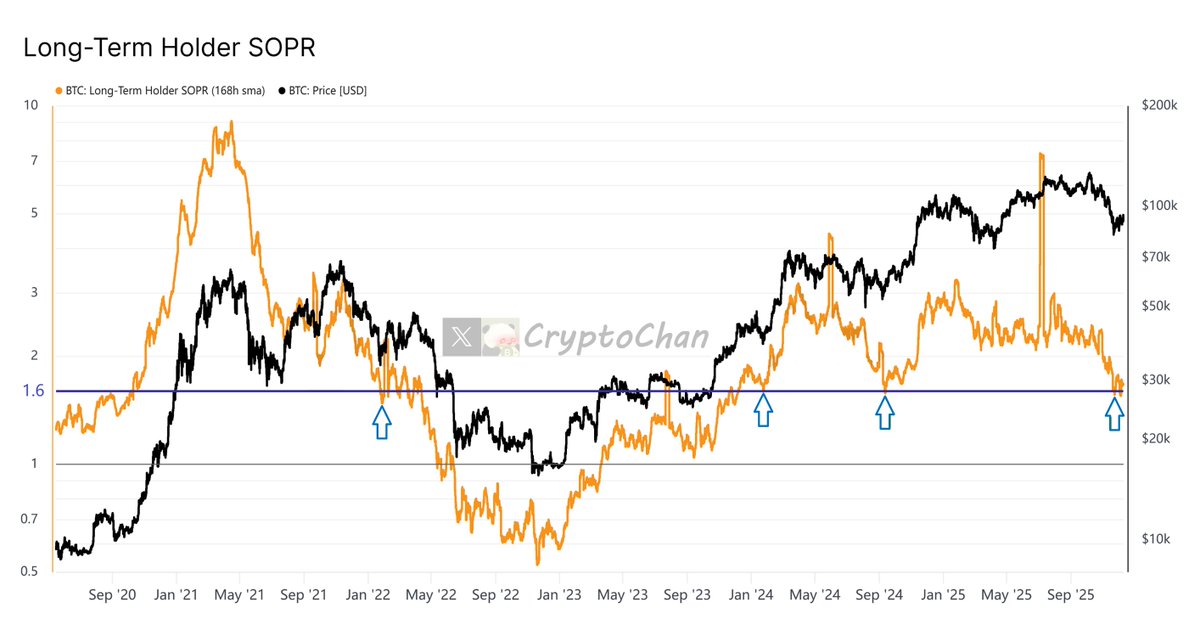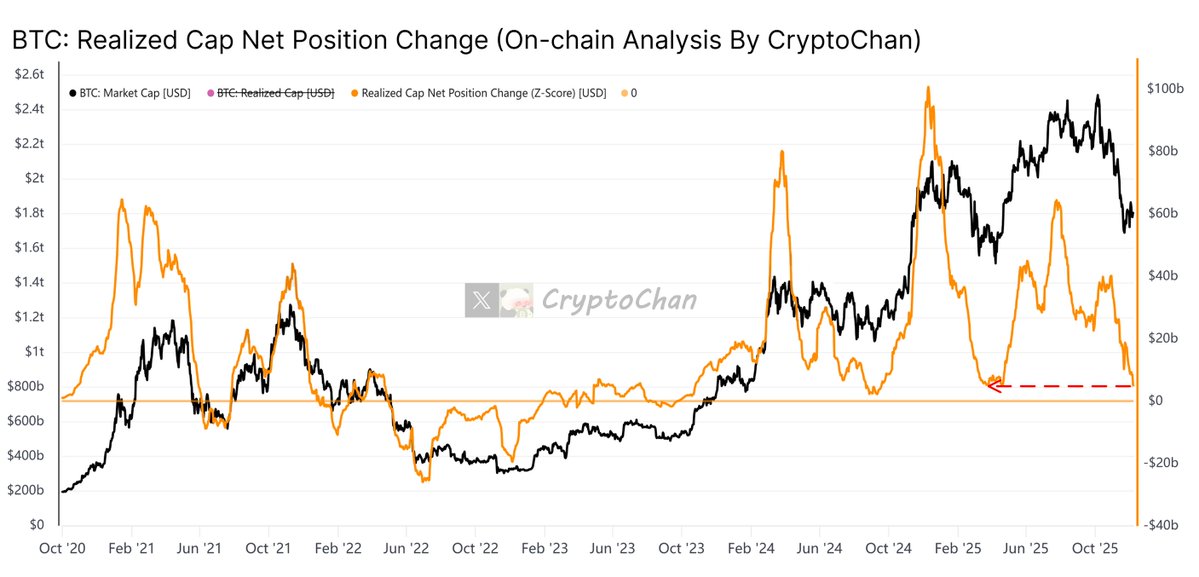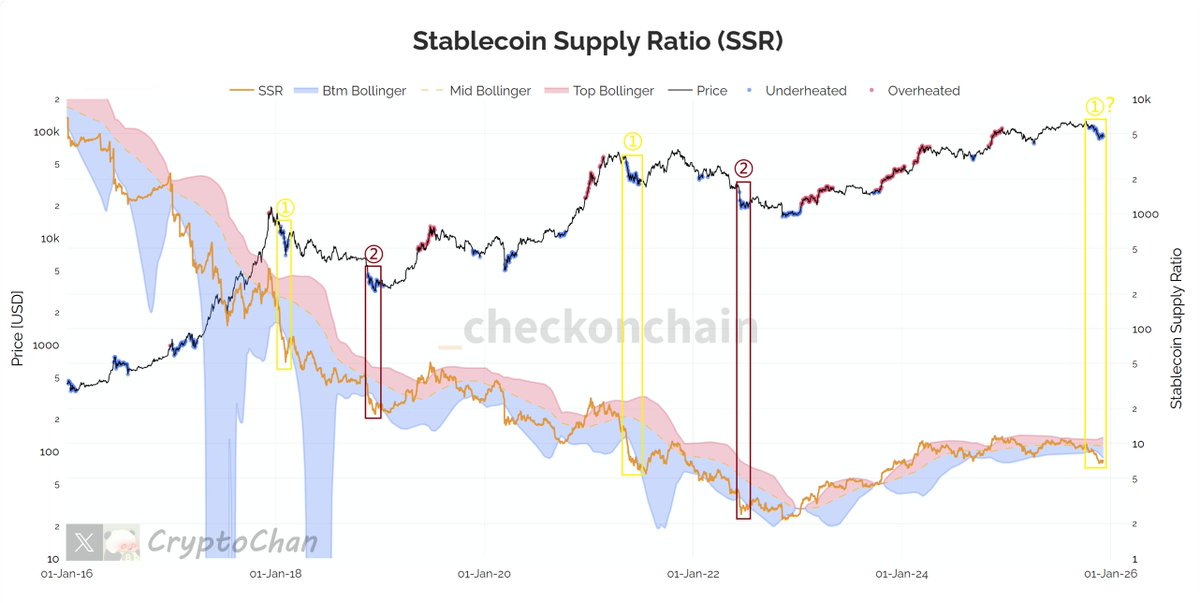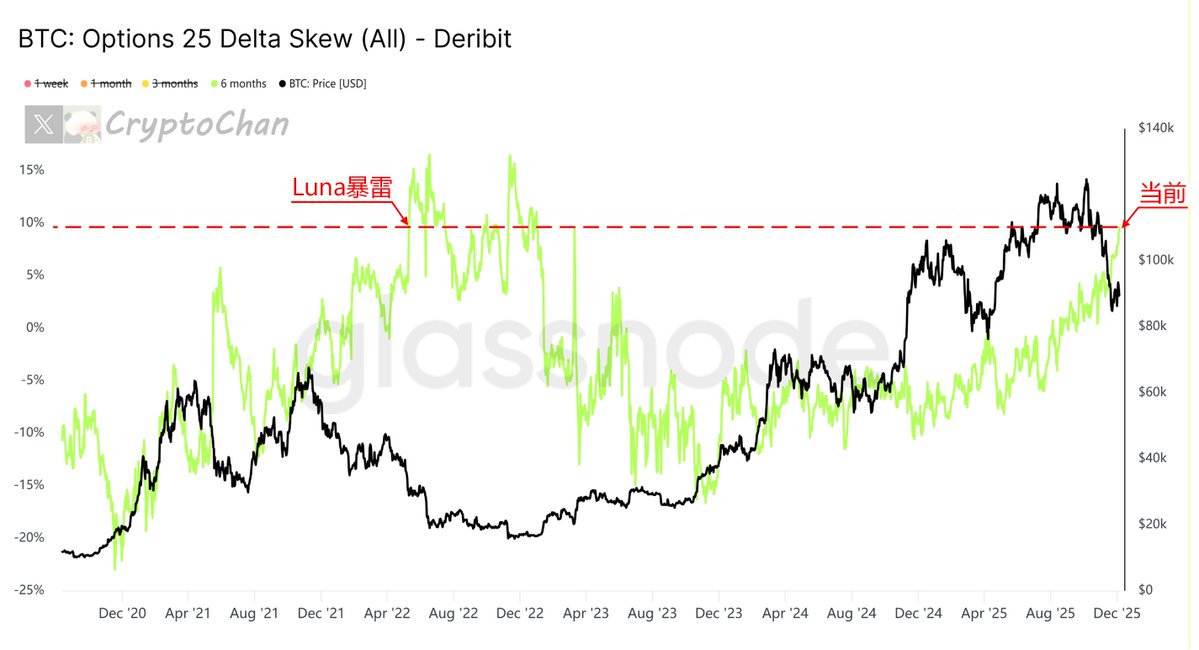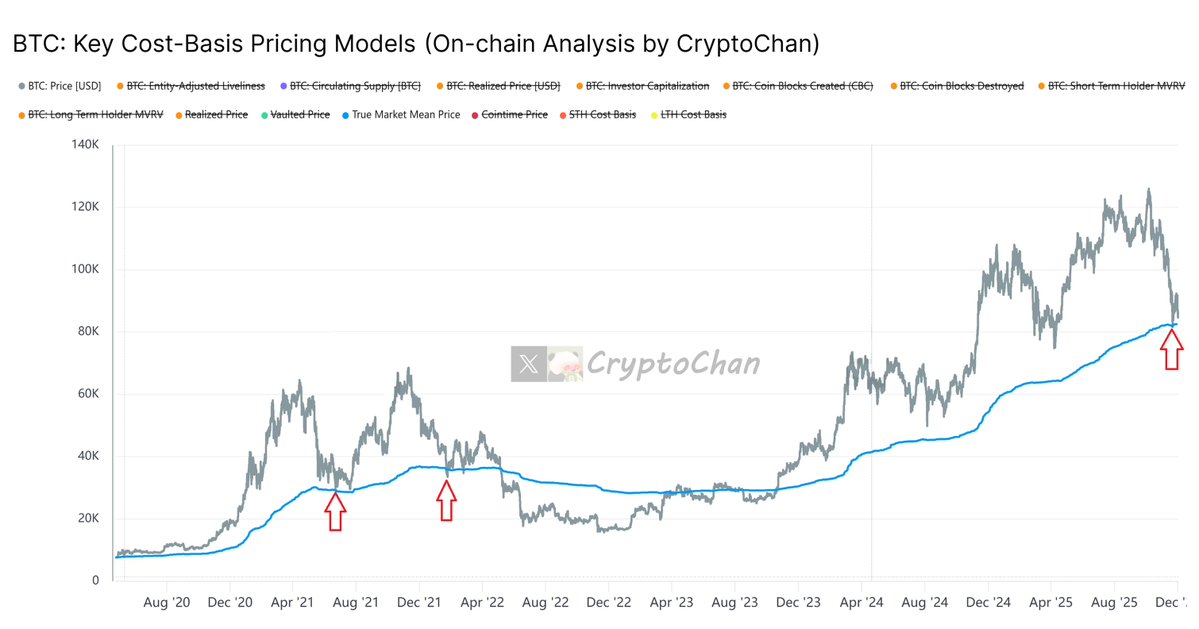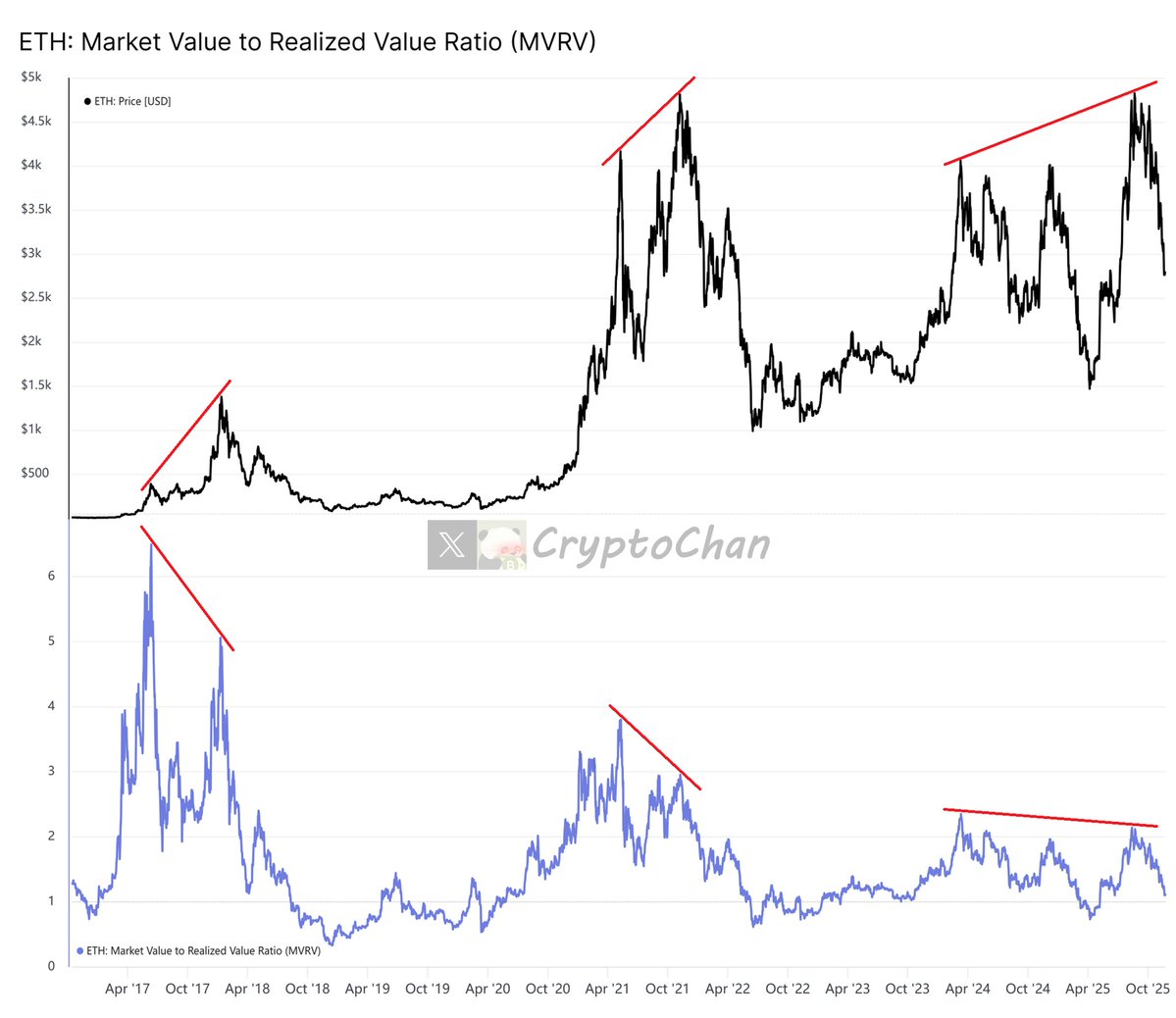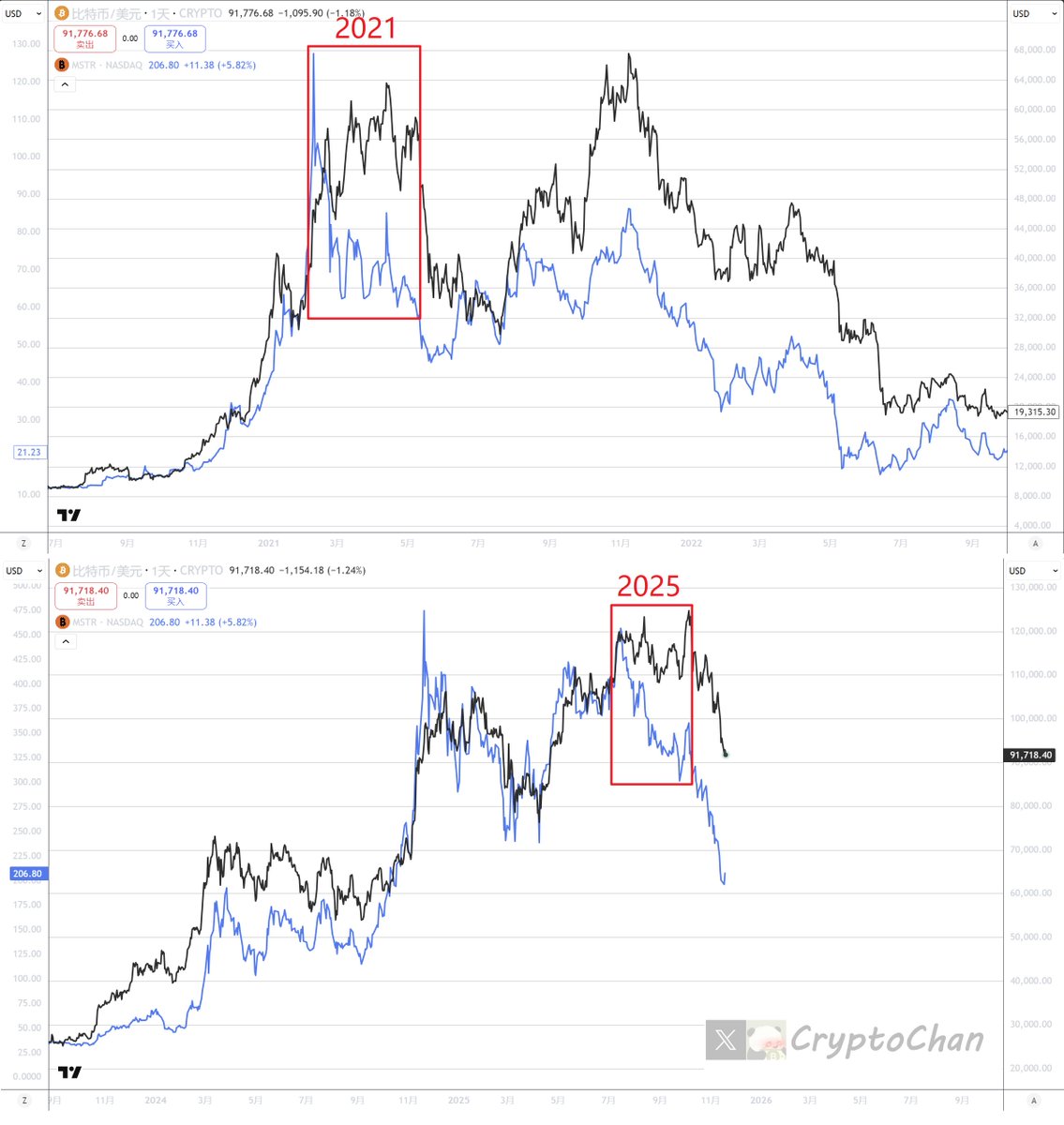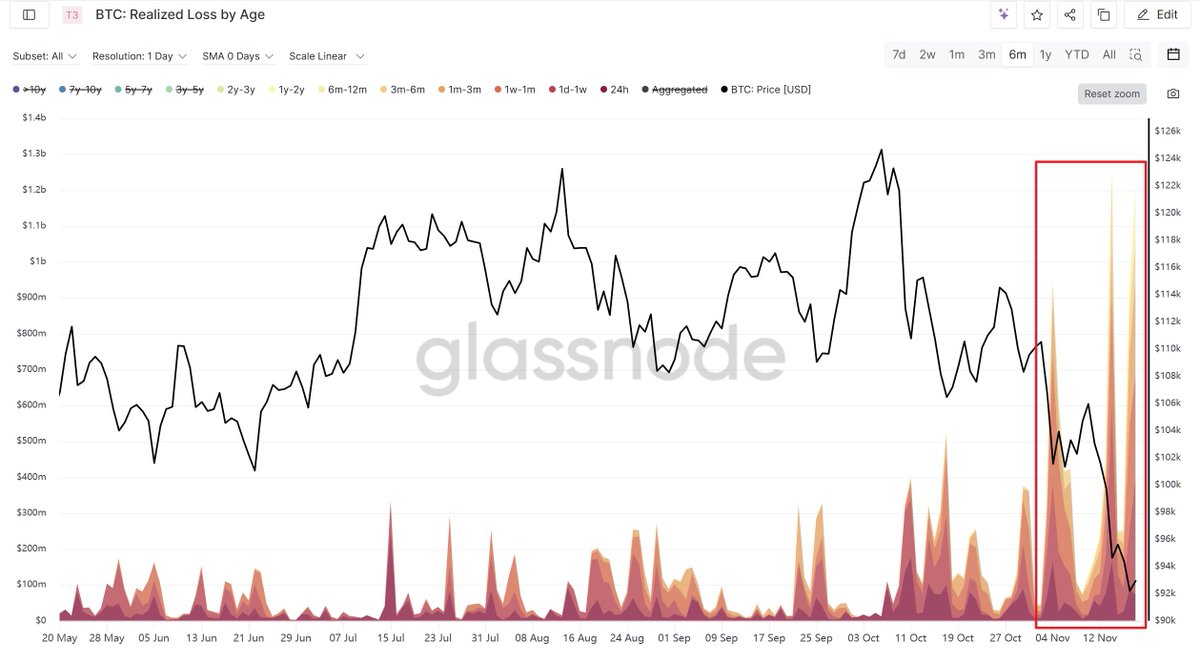口在收紧(比特币已实现盈利下降 & 已实现亏损上升)
图中上部指标为 #BTC 价格
图中中部指标为比特币已实现盈利(365日MA)和比特币已实现损失(365日MA)
图中下部指标为比特币已实现盈利(365日MA)跟比特币已实现损失(365日MA)之比,也即“已实现盈亏比(365日MA)”
该比率通过比较过去365天内投资者实现的盈利(卖出价格高于买入价格的部分)与亏损(卖出价格低于买入价格的部分)的移动平均值,反映了市场参与者的整体盈亏状态
在牛市,盈利亏损比通常较高,因为投资者倾向于在价格高位获利了结
在熊市,该比率通常较低,因为投资者可能在亏损状态下卖出,反映市场恐慌或投降行为
使用365日移动平均线平滑了短期波动,突出了长期趋势。这个指标适合用来判断市场是否处于过热(过高比率)或过度恐慌(过低比率)的状态,是判断市场周期和趋势的有力工具
Price Converter
- Crypto
- Fiat
USD美元
CNY人民币
JPY日元
HKD港币
THB泰铢
GBP英镑
EUR欧元
AUD澳元
TWD新台币
KRW韩元
PHP菲律宾比索
AED阿联酋迪拉姆
CAD加拿大元
MYR马来西亚林吉特
MOP澳门币
NZD新西兰元
CHF瑞士法郎
CZK捷克克朗
DKK丹麦克朗
IDR印尼卢比
LKR斯里兰卡卢比
NOK挪威克朗
QAR卡塔尔里亚尔
RUB俄罗斯卢布
SGD新加坡元
SEK瑞典克朗
VND越南盾
ZAR南非兰特
No more data


